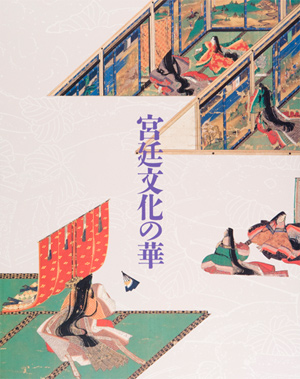| image | information |
|---|---|
 |
In July of the first year of Heisei (1989),His Majesty the Emperor donated,from out of“Gyobutsu" Imperial art collections, some 6,000 precious works of art and craft to the Japanese nation for the enjoyment of the general public. Through this magnanimous act on the part of His Majesty, the Imperial Household now possesses only those art and craft objects which have special connections with it and which have to be handed down to Imperial posterity, while the Imperial Household Affairs Agency has come to control, as national properties,a new treasure of art and craft now housed in the Museum of the Imperial Collections (Sannomaru Shozokan), in addition to a vast amount of art and craft objects already under its authority, including the Kyoto Imperial Palace, the Katsura Detached Palace and other architectural masterpieces as well as the Shosoin treasures and old books and documents currently under the supervision of the agency’s Archives and Mausolea Department. The art and craft objects housed in the Museum of the Imperial collections are of immense variety: they include paintings,calligraphic specimens and artifacts of many ages, ranging from ancient to modern, and not only of Japan but also of many other countries. Although further detailed studies are in order for the new Imperial donations, some are already enjoying extraordinarily high critical acclaim. The museum is scheduled to introduce the Imperial donations to the general public starting with such highly-reputed art objects in a series of exhibitions. Although some of the donations had been with the Imperial Household for countless centuries,most were offerings from temples, shrines, nobles and other dignitaries. Some of the best-known items in the Museum of the Imperial Collections include: Kasuga Gongen Miracles Picture Scroll, Mongol Invasion Picture Scroll and Story of a Painter Scroll , all of the Kamakura Period; Kano Eitoku's tour de force Lion Screen, Map of Foreign Countries Screen, Arrival of Portugese Screen, all of the Momoyama Period; Ito Jakuchu’s gigantic work Pictures of Animals and Plants of the Edo Period; Sangluantie, an album of calligraphic specimens of Wang Xi-zhi of the Eastern Jin Period in China; Byobu Dodai, drafts for inscription on screens, by Ono no Tofu,a famous calligrapher of the Heian Period and Priest Kukai's Fragments of Sung Guo-ting’s Calligraphic Specimens. Among the works of the Meiji Period and after, there are Takamura Koun's Japanese Fowl, Yokoyama Taikan’s Mt. Fuji in the Morning Light and many commendable products by other members of the Imperial Art Board as well as those by Takeuchi Seiho and other master artists. For the opening exhibition of the museum, we have selected works of art and craft highlighting the culture of the Heian court centering around the emperors-the court which was instrumental in creating and consolidating the very basis of the Japanese sense of beauty and culture. We have also tried to illustrate how the Heian culture has been handed down through the centuries to this day and how it has provided an inimitable stimulus to the artistic activities in later periods. In the field of calligraphy, we have chosen to focus on the beauty of kana writings done on fascinating ryoshi fancy paper, especially those representing poems from the Kokin Waka Shu and Wakan Roei Shu anthologies. From the 20-volume Kasuga Gongen Miracle Picture Scroll, scenes depicting various aspects of court life and culture are selected. Painted in the late Kamakura Period(in 1309, to be more precise)by Takashina Takakane, then head of the art section of the court, the monumental picture scroll superbly captures a wide variety of aspects of Kamakura nobles' life, expecially their costumes, houses and interior decorations, executed in the traditional Yamato-e style handed down from the Heian Period. The Tale of Genji Screen, currently attributed to Kano Eitoku and Kano Tanyu, is an eloquent testimony to the tremendous effects Japan's first ful1, bodied novel had exerted, ever since its debut in the Heian Period,on court nobles, who showed extraordinary interest in owning not only paintings but also calligraphic specimens and artifacts dealing with scenes from the novel. Writing desks, inkstone cases, paper containers and other stationery on display were indispensable part of court nobles' paraphernalias as was a set of covered box and utensils for incense-identifying game. By users' preference,such products often came with traditional designs depicting Heian stories executed in a gorgeous maki-e lacquer and inlay technique. In modern times, the love for Heian court culture is most evident in the proliferation of art works treating bugaku dance and music performances and other traditional practices still followed in the Imperial Household. |